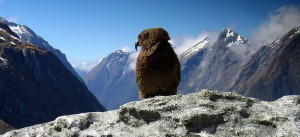There’s a difference between summer peaks and winter peaks.
In winter, you summit quickly because the peaks you reach are typically found at the end of a chairlift. You start the day at sea level in San Francisco, let’s say, and with a little luck and a tailwind you are standing at the top of Heavenly’s Sky Express lift (altitude 10,040 feet) by noon. That’s a lot of altitude in a short time, which is a great way to experience all the nasty symptoms of altitude sickness (i.e., headaches, nausea, shortness of breath, and palpitations).
In summer, you go up under your own power, so you go up slow. But that doesn’t mean you’re protected from mountain sickness. The higher you go, the greater the risk. Above 9,500-10,000 feet, there’s a risk of more severe symptoms, including loss of appetite, sleeplessness, vomiting, pulmonary edema and cerebral edema.
As we noted earlier, age seems to make it less likely that you’ll suffer from altitude sickness. But no one is immune.
You can take drugs to counter the effects, including Diamox,Viagra and Cialis. But the best way to avoid altitude sickness is to avoid altitude.
You have plenty of options in winter. Whistler-Blackcomb tops out at 7500 feet; Alyeska never gets above 4000. Mt. Hood, Killington. And it gets even better in summer. You can stay reasonably close to sea level and still enjoy excellent trails and glorious vistas. Lonely Planet’s list of multi-day low-altitude treks is a good place to start, but it’s easy to add your own ideas. The highest point in the Appalachian Trail is just 6,643 feet; you can travel the length of the Superior Hiking Trail and never get over 1,800 feet.
There will still be headaches, but they’ll come from broken straps, forgotten gear and leaking boots. The day-to-day of being on trail. Still not fun, but preferable to mountain sickness.
Photo: Subadult Kea (Nestor notabilis) on MacKinnon Pass (Milford Track) overlooking Fjordland in New Zealand, by Michael Harsch, Harschism, via Wikimedia Commons.










